Compliments in Spain
Friday, May 31, 2013
A compliment in Spanish is a “Piropo”, “Lisonja”, “Halago”. But a “Piropo” is also named “Requiebro”.
The word “Requiebro” reminds me the group REQUIEBROS, who sing “Sevillanas” and I love it. Here you can watch them singing the song "Baila conmigo" (Dance with me).Please click down here:
"Baila conmigo", by Requiebros
This is the lyrics:
I
Al bailar por sevillanas
se me olvidan los pesares;
baila conmigo, gitana,
por la gloria de tu “mare”.
ESTRIBILLO:
Baila en esta Andalucía
con el sol del mediodía,
con la Luna y con el trigo,
y hasta que amanezca el día,
gitana, baila conmigo.
II
Al bailar por sevillanas
se me olvidan las duquelas;
baila conmigo, gitana,
que la noche es de canela.
ESTRIBILLO:
Baila en esta Andalucía
con el sol del mediodía,
con la Luna y con el trigo,
y hasta que amanezca el día,
gitana, baila conmigo.
III
Al bailar por sevillanas
se me olvida que he “sufrío”;
baila conmigo, gitana, que este mundo es tuyo y mío.
ESTRIBILLO:
Baila en esta Andalucía
con el sol del mediodía,
con la Luna y con el trigo,
y hasta que amanezca el día,
gitana, baila conmigo.
IV
Al bailar por sevillanas
se me olvidan los disgustos;
baila conmigo, gitana,
ahora que estamos a gusto.
ESTRIBILLO:
Baila en esta Andalucía
con el sol del mediodía,
con la Luna y con el trigo,
y hasta que amanezca el día,
gitana, baila conmigo.
But “Requiebros” is also the tittle of a music by the Spanish composer, Gaspar Cassadó. This is that music; please click down here:
"Requiebros", by Gaspar Cassadó
A “Compliment” is always only for one person, not for several persons at the same time.
In 1737, the Dictionary of the Spanish Language said that “Requiebro” is the word said or a sweet word, loving, attractive, with which to express the tenderness of Love. It thus keeping alive the loving affections, priming with markups and soft tender compliments the flames own and others´.
The current dictionary says that now the Society is not as prosaic as before.
In the Zarzuela, compliments are used widely.
An example of Song of Zarzuela with compliment is the tittle: “Piropo Madrileño” de Maria Manuela (“Compliment of Madrid” of Maria Manuela), by the Master Federico Moreno Torroba. Here you can watch the show.Please click down here:
"Piropo madrileño", by Federico Moreno Torroba
It is a pity but in Spain compliments have disappeared.I hope that they come bach again anyday.
Till soon, kind regards,
Luis.
Sponsored by Costaluz Lawyers.
Please click down here:
.jpg)
 0
Like
Published at 4:46 PM Comments (0)
0
Like
Published at 4:46 PM Comments (0)
More funny phrases by spanish children 6
Thursday, May 30, 2013
Javier, 7 años:
Estaba su tio explicandole cosas sobre los gladiadores y, sin pretender una respuesta por parte del niño, le preguntó: "Javier, ¿Tú sabes quién es el César?". "¡Pues claro, el de Los Morancos!", contestó Javier, todo convencido.
Javier, 7 years old:
By explaining things was his uncle about the gladiators and, without seeking a response from the child, asked: "Javier, do you know who the Caesar is? ". "Of course, he is of Los Morancos!" , replied Javier, convinced.
.jpg)
On the left side: César.On the right side: Jorge.They are the couple of brothers "Los Morancos".
Raquel, 3 años:
Raquel estaba jugando con sus vecinos, que son un poco mayores que ella.Cuando le preguntaron: “¿Juegas en mi equipo o en el de mi hermana?”, Raquel contestó: “No sé, yo es que soy del Barça…..”.
Rachel, 3 years old:
Rachel was playing with her neighbors, who are a little older than her. When asked: "Do you play on my team or on my sister´s one?", Rachel said: "I do not know, I belong to the club of Barcelona..... ".
Verónica, 8 años:
Verónica estaba leyendo en voz alta el envase de una tableta de chocolate. Cuando llegó a la fecha de caducidad --“Consumir preferentemente antes de: leer el envase”--, exclamó,: “Jolines, mamá, ahora no puedo comérmelo…..ya he leído el envase!”.
Verónica, 8 years old:
Veronica was reading aloud a container of chocolate. When she reached the expiration date -- "Best before: read the package"-- she exclaimed, "Golly, Mom, I can not eat it now ..... I've read the package".
David, 4 años:
David salió de la consulta del oculista muy enfadado, porque él quería que le hubiesen puesto gafas, y le dijo a su padre: “Papá, ¿Ves aquel avión?”. “Sí, sí que lo veo”, contestó su padre. “Pues yo no”, dijo David.
David, 4 years old:
David left the eye doctor consultation very angry, because he had wanted him to put glasses, and told his father: "Dad, do you see that plane?". "Yes, yes I see", replied his father. "Not me", said David.
Till soon, kind regards,
Luis.
Sponsored by Costaluz Lawyers.
Please click down here:
.jpg)
 0
Like
Published at 6:46 PM Comments (0)
0
Like
Published at 6:46 PM Comments (0)
Three new areas declared a Biosphere Reserve in Spain
Wednesday, May 29, 2013
Spain becomes the second country in the world with more biosphere reserves.
Spain has 45 areas declared Biosphere Reserve by behind the U.S.A., which has 47 zones.
This has been possible thanks to the 3 new areas, declared Biosphere Reserve, in the heart of the United Nations Organization for Education, Scientific and Cultural Organization (UNESCO).
This is La Granja and El Espinar, in the Sierra de Guadarrama, (Segovia), the Mariñas Coruñesas and Terras do Mandaean, in Galicia, and the Ebro in Catalonia, which make up the global list of the International Council decision Coordination of the Programme on Man and the Biosphere (MAB).
These three new zones Spain ahead of Russia in the world rankings,
The Granja and El Espinar, which its promoters have begun to call before this declaration in Paris as Biosphere Reserve Sierra de Guadarrama, covers 35,414 hectares, is home to a population of about 14,000 people and is located in the province of Segovia, 50 kilometers north of Madrid.

La Granja, Segovia, Center-North of Spain.
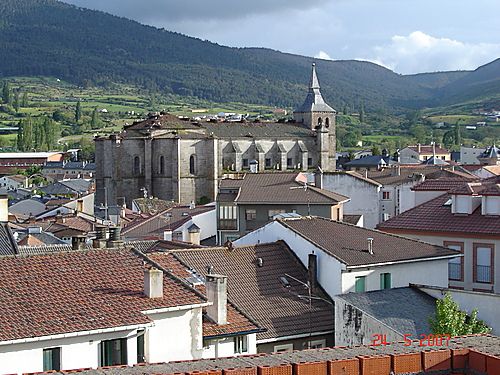
El Espinar, Segovia, Center-North of Spain.
She belongs Valsaín mountain, which is one of the large wooded areas of the country, and that "of considerable value to both ecological, economic, aesthetic and social", said Unesco.
The Paris-based organization stressed that the glass industry, tourism and small-scale farming are economic activities that hosts the site and are installed in the reserve several research centers, which are principally engaged in forestry research.
For booking Galician (Las Mariñas Coruñesas e Terras do Mandeo), the new biosphere reserve covers about 116,000 hectares, has a population of about 190,000 inhabitants and includes the basins of two great rivers, the Mandaean and the Mero, with coastal and mountain ecosystems that give home to a rich biodiversity.
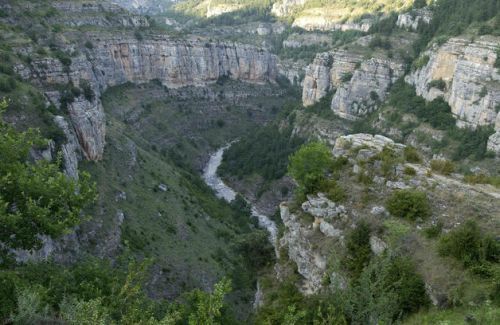
Mariñas Coruñesas.La Coruña, Galice, Northwest of Spain.
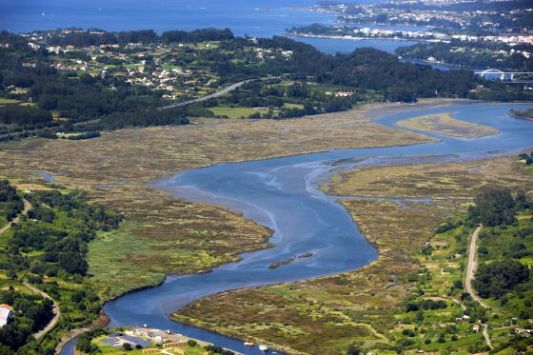
Terras do Mandeo, Galice, Northwest of Spain.
It also focuses a great cultural diversity linked to the use of natural resources, which
has made it possible, according to UNESCO, "the maintenance of communities and
conservation of indigenous breeds of cattle."
On the Land of the Ebro, the organization noted that this reserve located in Catalonia,
of 367.729 hectares, has a population of 190,000 inhabitants and covers the delta Ebro
Basin, the largest river in Spain.
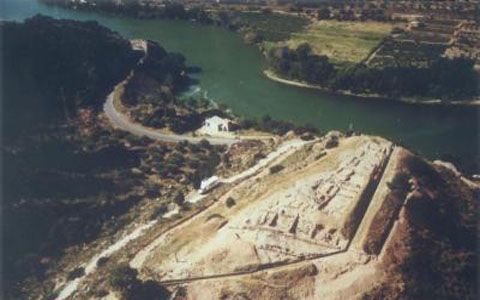
Land of The Ebro, Northeast of Spain.
The area has "numerous interior and coastal ecosystems," said the organization.
"Most of the site is dedicated to livestock. Were also developed in him alternative energy (wind, solar or hydro), taking care to respect the environment and the landscape," said Unesco on the Land of the Ebro .
Deputy General Director of the National Parks Autonomous Agency, Montserrat Fernández Sanmiguel, who has attended the event in Paris, which approved the new reserves, said Efe her satisfaction and highlighted the "excitement" with which she has followed the act and that "incorporates 65 new municipalities" with this statement.
The Spanish of the biosphere reserves include such prominent places as Ordesa-Viñamala, the islands of Lanzarote, Menorca and El Hierro, the Sierras de Cazorla and Segura, Monfragüe Park, Picos de Europa, Sierra Nevada and the Upper Basin of the Manzanares , not forgetting Urdaibai Doñana.
Biosphere reserves are places, in consultation with local populations, are experienced innovative practices to reconcile human activity and conservation of the environment, according to UNESCO.
Activities in these areas are concentrated in particular ecosystems: mountains, tropical forest, urban systems, wetlands, islands and coastal and marine areas.
Launched in the early 70s, the program on Man and the Biosphere promotes interdisciplinary research, encourages capacity building and its main objectives to reduce the loss of biodiversity and treat their ecological, social and economic, as Unesco .
Nominations submitted this year, in addition to Spain, China, Ecuador, France, India, Italy, Jamaica, Kazakhstan, Pakistan, Republic of Korea and Uruguay.
The World Red Man and the Biosphere has 610 sites spread over 117 countries.
Till soon, kind regards,
Luis.
Sponsored by Costaluz Lawyers.
Please click down here:
.jpg)
 0
Like
Published at 3:16 PM Comments (0)
0
Like
Published at 3:16 PM Comments (0)
The language of the crisis in Spain
Monday, May 27, 2013
Any season with exceptional circumstances is associated with a special language, with an increase of meaning of some words. For example: some years ago we thought that “Marea” (tide) was referring only to sea; but now –cause of the hard crisis that we are suffering--, a “Marea” is not referring to sea but a crowd of people, who is going on protest demonstration against the government, for example.In this case , “Marea” is (wave, surge).
Another word, that is being used in other context, is “Acampada” (Camping), that was a leisure activity.However, it is now another protest demonstration.
Therefore, it is true that exist a “Language of the crisis”.
Another word that has increased its significance is “Chiringuito” (a bar, with or without a restaurant, in a beach). We always knew that it was only that significance; but now, with the crisis, we know that is also “A financial snack”.
.jpg)
Chiringuito Bien-star, Playa de Tarifa, Cádiz, Southwest of Spain, by Chodaboy, at flickr.com
Other word: “Austeridad” (Austerity).In the past, it was not a negative word, because it meant: ·Savings”; but, now it is so negative, because it means: “Dourness, cutting…”.
Another word: “Preferente” (preferential). Some years ago, the word “Preferential” was positive, because, for example you could go by train with class “Preferential” –it was the best--.But now, “Preferential" is negative, because it means that you have “preference shares” in a bank.
Another word so used now is: “Prima de riesgo” (Risk premium). But, at the begining it was the word “Spread” ; but the Mass Media, in Spain, thought that it should be complicated for people to accept that term and they tought to use “Diferencial de la deuda” or “Coste de la deuda” and at the end, they decided to use “Prima de riesgo”.
Another sentence is “Plan de saneamiento” (Sanitation plan), that means: “Despido”(Dismissal), in a company.
Another word: “Recesión” (Recession) is the zero increase of the Gross Domestic Product , in 3 months.
Perhaps you have hear another words about crisis.
Till soon, kind regards,
Luis.
Sponsored by Costaluz Lawyers.
Please click down here:
.jpg)
 0
Like
Published at 3:03 PM Comments (0)
0
Like
Published at 3:03 PM Comments (0)
Tiny Words in Spanish
Saturday, May 25, 2013
In Spanish, we have a lot of words, which are diminutives, and a lot of the are used by us like diminutives, although we do not know that. For example: many people do not really know that “Pañuelo” (handkerchief) is the diminutive of “Paño” (cloth). Another word is “Mosquito”, that is the diminutive of “Mosca” (Fly).
We will see diminutives, in Spanish, when we see the terminations: “ito” or “illo”. Illo: for example “Bocadillo” (Sandwich; but not two slice of bread, with lettuce and tomato or ham and cheese, as it is known in England. No, , in Spain, a “Bocadillo” is composed by a piece of baguette or a loaf of bread, cut in half, with ham and cheese or sausage or roast or grilled chicken, or anything else). A “Bocadillo” is really “an small snack”.

Bocadillos del Kortaberri de Zumárraga, by chalo84, at flickr.com
With the same termination in “Illo” is the word: “Canastillo” (Small basket) or “Canastilla” (punnet or small basket. But also Baby gift basket. Canastillo and Canasto, both come from the word “Canasta” (Basket).
Other words: “Bombilla” (Lamp) is really a little bomb. “Cigarrillo” is a little Cigarette.
“Tornillo” (Screw) is the diminutive of “Torno” (Lathe) –because the “tornillo” rotates such as “torno”--.
Another sympathetic word is: “Manecilla” –about the hans of a clock--; it is the little hands of a clock.
The diminutive “Infiernillo” (Little Hell….) has to do with the Hell, where we alwys thought that “It is so hot”. Then, an “Infiernillo” is like a brazier, but more little.
Another curious diminutive: “Ardilla” (Squirrel); originally, this animal was named “Harda”, but time passed and it was named “Arda” and, much more time after, it was named “Ardilla”, till today.
Another interesting word: “Buhardilla”; it is the diminutive of Buharda, that comes from “Buf” –more than a word, “Buf” is a sound, because it is assumed that so is how wind makes into the smokestack. It has happened because, at the beginning it was “Bufar” and it changed to “Buhar”.
Other diminutive is “Camilla” (Stretcher), from “Cama” (Bed). Also: “Mesilla”(Small table), from “Mesa” (Table).
But sometimes, we use diminutives in a pejorative sense; for example: “Listo” is clever, But….”Listillo” is who wants to get more benefit other people, even cheating.
Another very Spanish word is “Castañuelas” (Castanets). Probably it comes from the tree named “Castaño” (Chestnut).
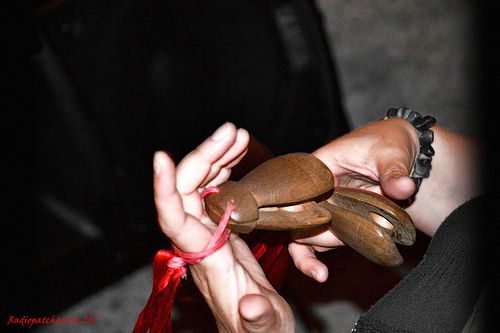
"Castañuelas", by Radio Patchanka
Another curious case: “Lentejuela” (Sequin); it comes from “Lenteja” (Lentil) and this one comes from “Lente” (Lens).
And “Aleta” (Fin) is the diminutive of “Ala” (Wing); it is used so in order to differentiate fishes from birds.
I hope that you have enjoyed with all of those words.
Till soon, kind regards,
Luis.
Sponsored by Costaluz Lawyers.
Please click down here:
.jpg)
 0
Like
Published at 2:09 AM Comments (0)
0
Like
Published at 2:09 AM Comments (0)
More “Blue Flags” for Spain
Friday, May 24, 2013
This year, Spain has 10 “Blue Flags” more that the last year, 2012, in its beaches and marinas.
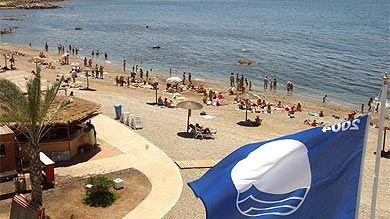
A Blue Flag in a beach of Spain
Spain has got 648 “Blue Flags”; it is the best result in the history and it also means that Spain is in the first place between the countries of the Northern Hemisphere.
This summer, 551 “Blue Flags” will be flying in beaches and 97 in marinas.
The Blue Flag is a quality that rewards compliance with standards of hygiene, health, safety, accessibility, information and lifeguard.
The result means that one in six Spanish beaches has a “Blue Flag”. And one in six flags, of the total of the 3.729, given in the Northern Hemisphere, will be flying in Spain.
Spain receives 10 flags more than in 2012, thanks to increased 7 flags in Valencia, the increase in Cantabria (+4), Andalucia (+4) and Catalonia (+3). However, in the Balearics have fallen sharply (- 6).
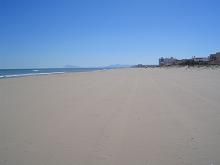
"Beach of Xeraco", Valencia, East of Spain
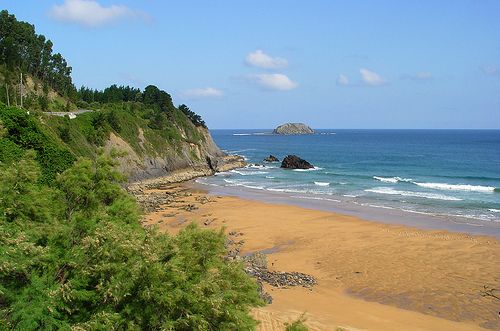
"Playa de Laga", Cantabria, North of Spain, by Fernando Cuenca Romero, at flickr.com
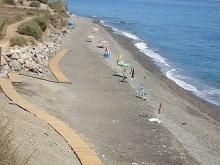
"Beach Casarones", Granada, Southeast of Spain

"Beach of Los Boliches", Fuengirola, Málaga, Southeast of Spain

"Beach of Camposoto", Chiclana, Cádiz, Southwest of Spain

"Beach La Mora", Tarragona, Cataluña, Northeast of Spain
With its 551 beaches awarded, Spain maintains its global leadership, followed far behind by Greece (393), Turkey (383) France (365), Portugal (280), Italy (248) and Denmark (243).
As regards awarded marinas, Spain is, however, in second position, as Germany, with 108 ports winners, is imposed on the Spanish port facilities (97). Next, we find Holland (95), France (88) and Italy (62).
Secretary of State for Tourism, Isabel Borrego, data held, considering that this record of 'blue flags' confirms Spain as prime vacation destination, while encouraged the municipalities and the Association of Environmental Education and consumer (Adeac) to continue in the "path quality".
Till soon, kind regards,
Luis.
Sponsored by Costaluz Lawyers.
Please click down here:
.jpg)
 0
Like
Published at 1:59 AM Comments (0)
0
Like
Published at 1:59 AM Comments (0)
Rural Angeles in Spain
Thursday, May 23, 2013
In Spain, there is special people who care for others.They really are like “Angeles”.They are for example the rural doctors.
One of these Angeles is Delio (a Doctor who lives and works in the area of the Bierzo, León, Northwest of Spain).He visit many little villages, which belong to four Councils. He says that they (the Doctors who work in little villages) have much more time to spend with their patients than their colleagues working in city.
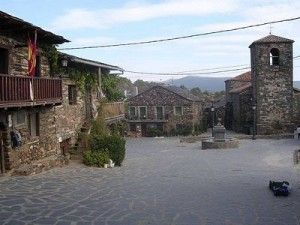
A little village in The Bierzo
But another Doctor, who has more merit than Delio is Juanjo (a colleague who works visiting very little villages –for example, one of them, where only six persons are living there--. I think that these doctors are like “Angeles”, because they deliver their effort, their knowledge, their love, to heal people, especially older people. And they do all that, having a simple live: they have cars “all-terrain” –because they need them for mountain—and they have to pay those cars.
Another “essential Angeles” for the “rural world” are the Veterinarians. They care animals, but they really help so much to the people who work everyday with animals.
(2).jpg)
Cows in The Bierzo, León, Northwest of Spain
My most sincere tribute to them.
Till soon, kind regards,
Luis.
Sponsored by Costaluz Lawyers.
Please click down here:
.jpg)
 0
Like
Published at 2:15 AM Comments (0)
0
Like
Published at 2:15 AM Comments (0)
Spanish mushroom croquettes
Tuesday, May 21, 2013
A group of friends, named “Little tapas with friends” tell us about the spanish mushroom croquettes. And for doing it, they talk about Zugarramurdi.
The “Cave of Zugarramurdi” is in Navarra (North of Spain) and it is known cause of its history of phenomena associated with witches, and other occult arts.
.jpg)
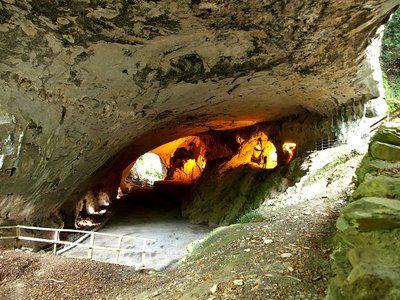
Cave of Zugarramurdi
.jpg)
Zugarramurdi, by Bart and Co, at flickr.com
But, Zugarramurdi is also a famous place, thanks to its mushrooms. The group “Tapitas con amigos” (Little tapas with friends) say that mushrooms can be eaten alone, but also inside a croquette. And that is what I want to do now: to talk about “Mushroom croquettes”.
.jpg)
"Y ahora croquetas de queso y setas y empanadilla de morcilla", by Antonio Domingo, at flickr.com
For those croquettes, the group “Tapitas con amigos” propose us to use some mushrooms named “Senderuelas”, it means: mushrooms that you can usually find near a road or a trail. These mushrooms are very little and, therefore, they are perfect for cooking croquettes.
.jpg)
"Setas", by Carlos Pérez-Aradros Herce, at flickr.com
Here you have the recipe for cooking “Croquetts with mushrooms”:
Ingredients:
n -1 liter of whole milk
n -15 gr. Of dehydrated mushrooms
n - ½ onion
n - 3 tablespoon of flour
n -100 gr. Of butter
n - Salt
n - Pepper
n - Nutmeg
n - Eggs
n - Breadcrumbs
For this kind of dough of croquettes, we will not first make a bechamel roux of butter and flour, but incorporate the flour to the sautéed mushrooms, and then, little by little, we will be adding milk until getting a slightly thickened béchamel.
We start chopping half an onion into very small pieces and we rehydrating the mushrooms, dipping about 20 minutes in warm water. After that time we will have a generous amount, equivalent to about 150 grams of fresh or frozen mushrooms.
If using frozen mushrooms, thaw them in the refrigerator, placing them in a colander over a bowl to drain water and not left flooded. This will require thinking ahead and do that operation the day before and so we get the best results. Drain well and chop into small pieces, which are the trips that we find in each croquette.
In a large skillet, melted butter and in it sauté the onion and mushrooms for about three or four minutes. Season and lower the heat to low and add the flour all at once. With a wooden spoon, stir to let the flour is distributed on the stir, covering every portion of onions and mushrooms, and forming a kind of sticky paste. We leave it to brown the flour stirring until dough begins to turn brown.
Added a stream of milk and stir the slurry, allowing the liquid absorbs it, until it virtually has disappeared. We continue to add streams of milk, and letting the paste dissolves gradually, it will not take more than 15 minutes have added almost three quarters of a liter of milk or a little more, until our cakes dough is perfect and to our liking .

The process of cooking "Croquettes with mushrooms"
We add a touch of nutmeg and turn off the heat, stirring to incorporate the flavor of the spice with the intense flavor of the mushrooms in the sauce. Having done thus mass, flour has been slowly eating milk to absorb, not dissolved in it, so we will not have even a single crumb. In addition, mushrooms have been all along in the bechamel, so have brought their taste for much longer. Try it and you tell me.
We extend the dough onto a platter and let cool and set. Finally, it only remains for us to form the kibble, this time round I did them, and fogging with beaten egg and bread crumbs. The last step is to fry the croquettes in hot olive oil, drain on absorbent paper and serve immediately.
Working time | 1 hour and rest.
I hope that you can come to Navarra so soon.
Kind regards,
Luis.
Sponsored by Costaluz Lawyers
Please click down here:
.jpg)
 0
Like
Published at 10:56 PM Comments (1)
0
Like
Published at 10:56 PM Comments (1)
Another Spanish sayings and proverbs, 47
Monday, May 20, 2013
An expression so used in Spain is the following:
A ojo de buen cubero = A rule of thumb
You do by approximation, by trial and error, by simple visual estimation; it is the same way as when in the past did their job makers buckets of wood ("cuberos") or other hollow volumes artisans as blowers glass, pottery,and so on. Example: "Nothing theodolites or bagpipes, a rule of thumb we calculate everything."
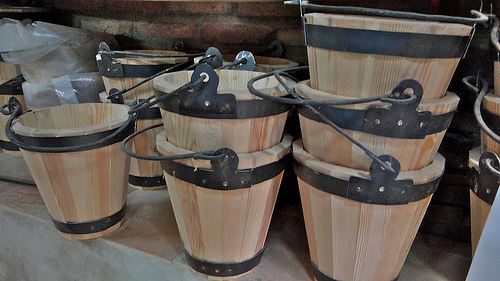
"Cubos de madera", by Miradas de Andalucía, at flickr.com
Till soon, kind regards,
Luis.
Sponsored by Costaluz Lawyers
Please click down here:
.jpg)
 0
Like
Published at 11:41 AM Comments (0)
0
Like
Published at 11:41 AM Comments (0)
Alájar, Huelva, Southwest of Spain
Monday, May 20, 2013
The town of Alájar is located at 115 kilometers of Huelva and 102 of Seville. It belongs to the Natural Park of Sierra de Aracena and Picos de Aroche. Its extension is of 41,9 Km2 and contains seven organizations of population: Alájar, El Cabezuelo, El Calabacino, El Collado, Los Madroñeros, La Peña de Arias Montano and San Bartolomé. Its altitude is of 577 meters, except the zone of the Rock with 700 meters. The population according to the register of the 2003 is of 813 inhabitants.
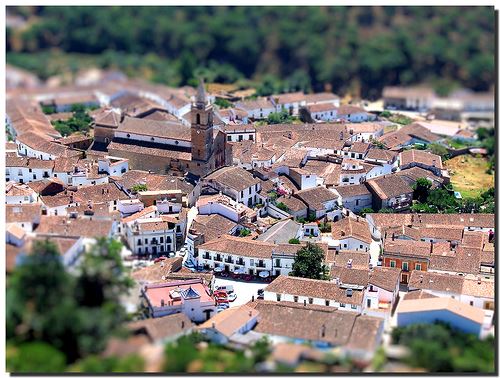
"Alájar", Huelva, Southwest of Spain, by SantiMB, at flickr.com
Alájar belongs to Huelva and it gives name to the mountain pass, that divides the towns of Alájar and Castaño del Robledo.
The “Peña de Arias Montano” is visited every year by many people, because there is a bust of the great humanist and theologian of the sixteenth century. He lived there.

Alajar seen from the Peña de Arias Montano
In 2011, a part of the movie, “Sólo se vive una vez”, by the Director Zoya Akhtar, was shot in Alajar.
The date of origin of the municipality is uncertain, the name is of Arab origin, means stone or rock. It was a village that comprised of the municipal term of Aracena, within the Tierra de Sevilla. Two villages existed: Alfajar de arriba (hermitage) and Puebla del Valle (locality). On 1480 each one it had about 10 neighbors, dedicated to agriculture, doing reference to orchard, fruit trees and cattle ranch. It had to be fitted in the Kingdom of Niebla before Reconquista. During second half of 16th century it acquires certain reputation due to the presence in the Rock of Benito Arias Montano and to the operation of lead deposits and silver. It obtained the title of town in 1702.
Till soon, kind regards,
Luis.
Sponsored by Costaluz Lawyers
Please click down here:
.jpg)
 0
Like
Published at 1:05 AM Comments (0)
0
Like
Published at 1:05 AM Comments (0)
More funny phrases by spanish children 5
Thursday, May 16, 2013
Ángel, 3 años:
Un dia llevaron a Án gel al cine, a ver “La Bella y la Besia”; y cuando apagaron las luces, dijo: “Oh, oh…….!, me parece que es de miedo”.
Ángel, 3 years old:
One day Angel was taken to the movies, to see “The Beauty and the Beast "; and when the lights went out, he said: " Oh, oh ....!, I think it is scary. "
Meritxell, 5 años:
Mientras cenaban, viendo las noticias, sus padres hablaban de la crisis.Meritxell se quedó mirando a su madre y le preguntó: “Mamá, ¿Estamos en crisis?”, “Sí”, le contestó ella.Entonces la niña se puso muy seria y dijo: “Ydespues de la crisis, ¿Qué viene?: ¿El verano?”.
Meritxell, 5 years old:
While they were eating, watching the news, her parents spoke of the crisis, Meritxell stared at her mother and asked: "Mom, are we in crisis?","Yes", she answered.Then the girl became very serious and said: "And after the crisis, What comes?. The summer?".
Eloy, 6 años:
Una noche le dijo su abuela: “¡Venga, Eloy, a dormer ya!”. Y Eloy respondió: “¡Es que si duermo mucho no disfruto de la vida!”.
Eloy, 6 years old:
One night, his grandmother told him: “¡Come on, Eloy, to sleep already!”.And Eloy answered: “¡Is that if I sleep not enjoy life!”.
Manuel, 4 años:
Su madre llevaba ya bastante tiempo sin trabajo, y un dia Manuel le dijo: “Mamá, ya va siendo hora de que trabajes otra vez.Yo necesito hacer mi vida”.
Manuel, 4 years old:
His mother was quite some time without work, and one day Manuel told her: “Mom, it's time for you to work again. I need to make my life”.
Dani, 5 años:
Estaba viendo una revista del Corazon con su madre y habia una foto en la que salia un niño con la cara pixelada; y dijo Dani: “Mamá, ¿Tan feos son que les borran la cara?”.
He was Reading a magazine of heart with his mother and there was a picture, in which appeared a boy with his face pixilated; and Dani told her: “Mom, So ugly is it that they blur the face?”.
To be continued……..
Till soon, kind regards,
Luis.
Sponsored by Costaluz Lawyers.
Please click down here:
.jpg)
 0
Like
Published at 7:51 PM Comments (0)
0
Like
Published at 7:51 PM Comments (0)
“La levantá” in Andalusia (Spain)
Tuesday, May 14, 2013
From next May-14 till May-19, the “V Ruta del Atún 2013” (“Tuna Fifth Route 2013”) shall be celebrated, in Zahara de los Atunes (Cádiz, South-west of Spain).
This year, 36 restaurants there will be as participants. They will offer several “tapas” of tuna (Atún de Almadraba). This tuna is caught not far from the sea shore. Here you can see a photograph, made the last Saturday, in the evening, where you can see some little ships, that were caughting tunas, these last days, in the morning. When fishermen caught tunas, they name it: “La levantá”, because they “Levantan” (“Raise”) the tuna. This photograph was made in Atlanterra (five kilometers from the village, Zahara de los Atunes):
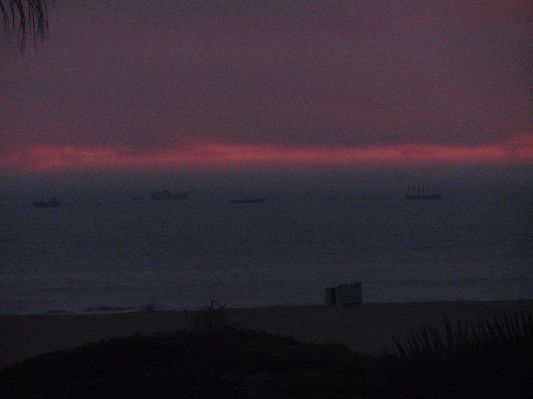
"La Almadraba", Atlanterra, Zahara de los Atunes, Cádiz.
.jpg)
La Levantá of the tuna.
When the fishermen caught the tuna, they take them off the wall of the village (Zahara de los Atunes). There, the tuna is cut in several pieces.Then, the tuna make a sound like human snoring and it is named "The ronquío" (snore) --because it remembers to that sound--.
This route is organized by the ACOZA (Asociación de Comerciantes de Zahara de los Atunes = Merchants Association of Zahara de los Atunes). If you want to have more information, please click on the next link:
http://www.rutadelatun.com/#!prettyPhoto[featured]/1/
In this web, you can see a photograph, up and right, where you can see how three fishermen are raising a tuna, in La Almadraba .
Down there, you can read: Premiación…. (it is the same than Awards….)
And you can read: “Certificado de los premios a los Ruteros” IV RUTA DEL ATUN 2012. “Certificated of the awards to the route-makers” Fourth ROUTE OF TUNA 2012.
To the right side, you can read: Comparte (Share it)
And down it, you can read: Share the V ROUTE OF TUNA with your friends, from the different social networking.
Down the pictures, you can read: Protocol agreement signed Caixa and Acoza and ceremony of the two TV Samsung 22 " awards at the V Route of Tuna, courtesy of the Caixa.
Down another three pictures, on the left side you can read: Ruteros Ganadores 2012 (Winners Route-Makers 2012) receive their awards, delivered by President Castro and Julian Gaspar Romero. in representation of the business association of Zahara, ACOZA.
Down the picture in the middle, you can read: FITUR 2013 (International Fair of Turism). And down it, you can read:. We were joined by the Artists: Marina San Jose, Rafa Reaño, Rafael Alkorta, and Pablo Carbonell on this occasion, to the presentation of the V Route Fitur Tuna.
Down the picture, on the right side, you can read: Vente a la Ruta (Come to the Route. And down it, you can read: In this year, 2012, Tuna IV Route was very busy for a figure that exceeded five thousand Route-Makers in 5 Days, from different parts of Spain and foreign tourists.
This year, the price for one “tapa of tuna” shall be 3,50 Euros.
The participating restaurateurs choose the prize for best cover (tapa), to be elected by popular vote. Consumers will be filling a passport that will do testing sealing caps as they come in different bars and restaurants attached to the route, and there is where you can vote for the caps they like. As always, at the end of the route, there will be raffles and gifts for those who deliver these passports duly stamped and refilled.
I hope that you have enjoyed; but, with this post.
Till soon, kind regards,
Luis.
Sponsored by Costaluz Lawyers.
Please clic down here:
.jpg)
 0
Like
Published at 12:35 AM Comments (0)
0
Like
Published at 12:35 AM Comments (0)
Another Spanish sayings and proverbs, 46
Thursday, May 9, 2013
A las tres va la vencida = At three time's the charm
It means that after two unsuccessful attempts, if you persevere in the effort with energy, the third is usually achieved. So it is used by Lucrecia, in "The Celestina", a very famous novel, by Fernando de Rojas, where Lucrecia wants to encourage to Calisto, who has tried to get the Melibea ´s love.
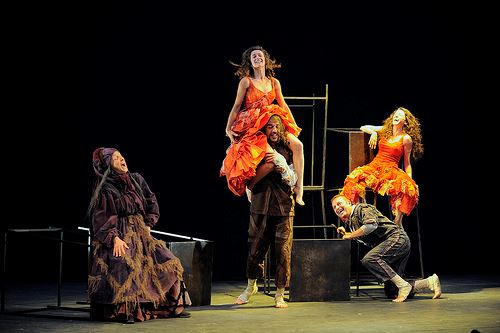
"Celestina.La tragicomedia". Almagro, Ciudad Real, almost middle of Spain, by Festival de Almagro, at flickr.com
I always thought that it was said: "A la tercera va la vencida"..."A la tercera" instead of "A las tres".
Till soon, kind regards,
Luis.
Sponsored by Costaluz Lawyers.
Please click down here:
.jpg)
 0
Like
Published at 2:18 AM Comments (0)
0
Like
Published at 2:18 AM Comments (0)
Fan in Spain
Wednesday, May 8, 2013
A Fan (Abanico) is an instrument and a fashion, which was invented and manufactured in order that manually it could move air and facilitate cooling when you are in a hot environment, without ventilation.
Fan was originated in China. Its operation is very simple, just enough arm waving harmoniously supporting it with more or less intensity, but its manufacture is delicate because it incorporates artistic trims and quality materials.
These are the components of a fan:
--Baraja (Deck): Rigid and folding base of a fan.
--País (Country): The fabric that is attached to the “Baraja”. The fans which have no “país”, are named “de baraja” or simply “Barajas”.
--Varillas (Ribs): Wood that can be fretworked or painted.
--Caberas: First and last ribs, thicker than the rest.
--Calado (Fretwork): Holes made in the ribs.
The Flabélum or the high fan comes from the Egyptian and Asian antiquity, as manifested in the reliefs and paintings at least since the nineteenth dynasty in Egypt. But only used in the palaces.
The Greek civilization made use of the fan from the fifth century before Christ. The Greeks were followed by Etruscans and Romans and it is followed during the Middle Ages, such in civil life as in certain religious civilizations. Fan is to the very different ways and with varied materials, predominantly fabric and feather.
The folding fan was invented by a Chinese in the seventh century, inspired in the mechanism of the wing of a bat. In Europe it is known from the late fifteenth century, where it was brought by the Portuguese people, who opened trade routes to East. It was extended through all Europe and, at the beginning it was used by ladies of high society; but after for all layers of society. In the seventeenth century came to be the way it is now unfolding in recent centuries the whims of fashion and miniaturists introducing inventive fretwork, reliefs, inlays and precious materials. The Mores is a common motif in the design of the "país", where yet fit all kinds of images.
.jpg)
A fan with fretwork
In the eighteenth century Spain settled in the French craftsman Eugenio Prost1, under the protection of the Count of Floridablanca, making Spain one of the world's leading producers competing with French and Italian. That same century guild is created abaniqueros cited and late century, is based in Valencia, the Real Factory Fans.
Although fan was an instrument for ladies, some men also used little fans, in their pockets. And other biger fans, named “Abanicos de pericón” (“Fans of pericón”), specially for Flamenco dance.
However, their use becomes exclusive ladies early twentieth century up to these days, although today you can see men fanning. Apparently these ladies had such skill with the fans, who came to invent a "language of the fan", consisting of the position as it stood or the way as a lady grabbed the fan, it was transmitting a message type or another one.

The language of fan
I want to show you a nice videoclip, by a Spanish singer woman, who I love, named Diana Navarro.This is her song “ Mira lo que te has perdío” (“Look at what you have missed”), where she uses a fan:
Diana Navarro, in Live, with "Mira lo que te has perdío"
Till soon, kind regards,
Luis.
Sponsored by Costaluz Lawyers.
Please click down here:
.jpg)
 0
Like
Published at 1:26 AM Comments (0)
0
Like
Published at 1:26 AM Comments (0)
A tribute to a spanish lady with talent
Monday, May 6, 2013
Ángela Ruiz Robles was a lady, who was born in Villamanín (León, North-west of Spain) in 1895, lived and died in Ferrol ( La Coruña, Galice, North-west of Spain), in 1975. She was a teacher, writer and inventor, pioneer of the electronic book. She left us an amazing "mechanical Encyclopedia", but it was never manufactured. She patented the mechanical Encyclopedia in 1949.

Ángela Ruiz and her "Mechanical Encyclopedia"
Ángela presented the Encyclopedia in 1972. The Encyclopedia was intended to lighten the weight of the portfolios of children going to school. It consisted of a metal box with interchangeable rollers for the subjects. It could incorporate sound, a calculator, a diccionary. On its way, it got ahead the e-book and even tablet.
A grandson of Angela remembers that she worked on the project at night, but she did not find funding, to see it come true. Therefore, now Angela's family and friends have wanted to pay a tribute, with a permanent exhibition at the Museum of Science and Technology of La Coruña (Galice, North-west of Spain).
Finally, Angela has the recognition that she always deserved.
Till soon, kind regards,
Luis.
Sponsored by Costaluz Lawyers.
Please click down here:
.jpg)
 0
Like
Published at 11:56 PM Comments (0)
0
Like
Published at 11:56 PM Comments (0)
Spam post or Abuse? Please let us know
|
|